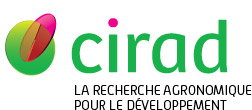Formentini Thiago Augusto, Fekiacova-Castanet Zuzana, Pinheiro Adilson, Doelsch Emmanuel. 2025. Unique behavior of zinc in organic waste-amended soils: A review bridging molecular processes and environmental fate. Environmental Pollution, 377:126459, 12 p.
|
Version publiée
- Anglais
Accès réservé aux personnels Cirad Utilisation soumise à autorisation de l'auteur ou du Cirad. Formentini et al. EnvPol 2025.pdf Télécharger (1MB) | Demander une copie |
Liste HCERES des revues (en SHS) : oui
Thème(s) HCERES des revues (en SHS) : Psychologie-éthologie-ergonomie
Résumé : Organic waste (OW) is a major source of zinc (Zn) contamination in soils, while the behavior of this element is highly influenced by its speciation. This review examines Zn speciation in OW and OW-amended soils according to data from studies using synchrotron-based X-ray absorption spectroscopy (XAS). In contrast to the well-established Zn behavior in soils contaminated by industrial sources such as mining and smelting, Zn in OW-amended soils exhibits distinct characteristics. Notably, Zn–phosphate is abundant when oxidizing conditions prevail in OW, and this species is consistently observed in amended soils. In contrast, nanosized Zn sulfide (nano-ZnS) dominates in OW under reducing conditions and is susceptible to rapid solubilization following soil application. After Zn release in soil, its complexation by organic ligands (Zn–OM) warrants special attention as it has been linked to both long-term Zn retention and enhanced Zn mobilization via colloid-mediated transport. The role of other key Zn species in the OW recycling context, i.e. Zn–phyllosilicate and Zn–Fe (hydr)oxide, is also discussed. Additionally, we review studies using the diffusive gradients in thin films (DGT) technique to assess Zn lability in OW-amended soils. This reveals that proportional increases in DGT-Zn levels due to OW application are more substantial than corresponding increases in total Zn concentration, thus suggesting enhanced lability. By consolidating the current understanding and identifying key research gaps, this review proposes future directions to advance knowledge of Zn speciation and behavior in OW-amended soils. This, in turn, can help improve sustainable OW recycling practices and mitigate Zn-related risks to agroecosystems.
Mots-clés Agrovoc : déchet organique, spectroscopie aux rayons x, Éperlan, agroécosystème, matière organique du sol
Mots-clés géographiques Agrovoc : France
Mots-clés libres : Agricultural recycling, Speciation, Lability, XAS, DGT
Agences de financement hors UE : Coordenação de Aperfeiçoamento de Pessoal de Nível Superior, Ministère Français de l'Europe et des Affaires Etrangères, Ministère français de l'enseignement supérieur
Auteurs et affiliations
- Formentini Thiago Augusto, CIRAD-PERSYST-UPR Recyclage et risque (FRA) - auteur correspondant
- Fekiacova-Castanet Zuzana, Aix-Marseille université (FRA)
- Pinheiro Adilson, Regional University of Blumenau (BRA)
-
Doelsch Emmanuel, CIRAD-PERSYST-UPR Recyclage et risque (FRA)
 ORCID: 0000-0002-7478-4296
ORCID: 0000-0002-7478-4296
Source : Cirad-Agritrop (https://agritrop.cirad.fr/613277/)
[ Page générée et mise en cache le 2025-09-28 ]




